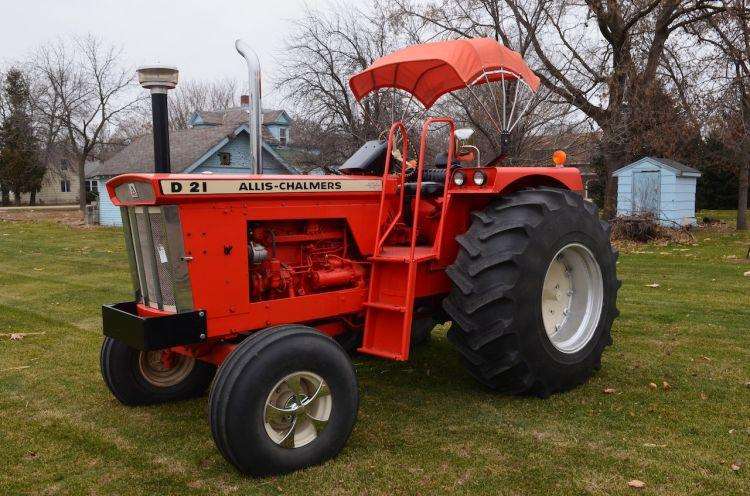The D-21 was introduced in 1963, and was the largest of the D Series
IN THE SHOP with Rachel
By Rachel Gingell
Farms.com
The Allis Chalmers D-21 is a beast of a tractor – and I mean that in a good way! If you can find one, scoop it up fast.
The D-21 is the first 100 horsepower tractor that Allis Chalmers made. When it was released in 1963, the D-21 was the clear powerhouse of the line.
The D-21 comes in two different versions. The Series I, manufactured through 1965, features a 7.0 L 6-cylinder diesel engine. In 1965, AC turbocharged the engine and upgraded the injector pump to coax out an additional 20 horsepower. Both versions featured an independent rear PTO and power steering.
The D-21 is a rugged tractor. Every part of this tractor – right down to the sheet metal – is built to last. 50 years later, these tractors are still going strong on farms today.

1968 Allis Chalmers D-21
Photo: CurranMiller Auction/Realty
When these tractors were offered for sale in 1963, loyal AC customers just weren’t ready to make the huge jump to a 100+ horsepower tractor. Despite strategic pricing (the D-21 sticker price was only $400 more than the next size down in the product line), the D-21 didn’t take off. In its six year production run, roughly 3,000 tractors were manufactured. By comparison, the company sold more than 10,000 of the 75 horsepower D-19 tractors.
Despite its low production numbers, the D-21 is surprisingly easy to find parts for. The D-21 has become a hot collector item, driving demand for aftermarket parts. In addition, the rugged design means you won’t be on the hunt for major components. Manuals and advice are easy to find – especially if you live in an area that used to have an Allis Chalmers dealership nearby.